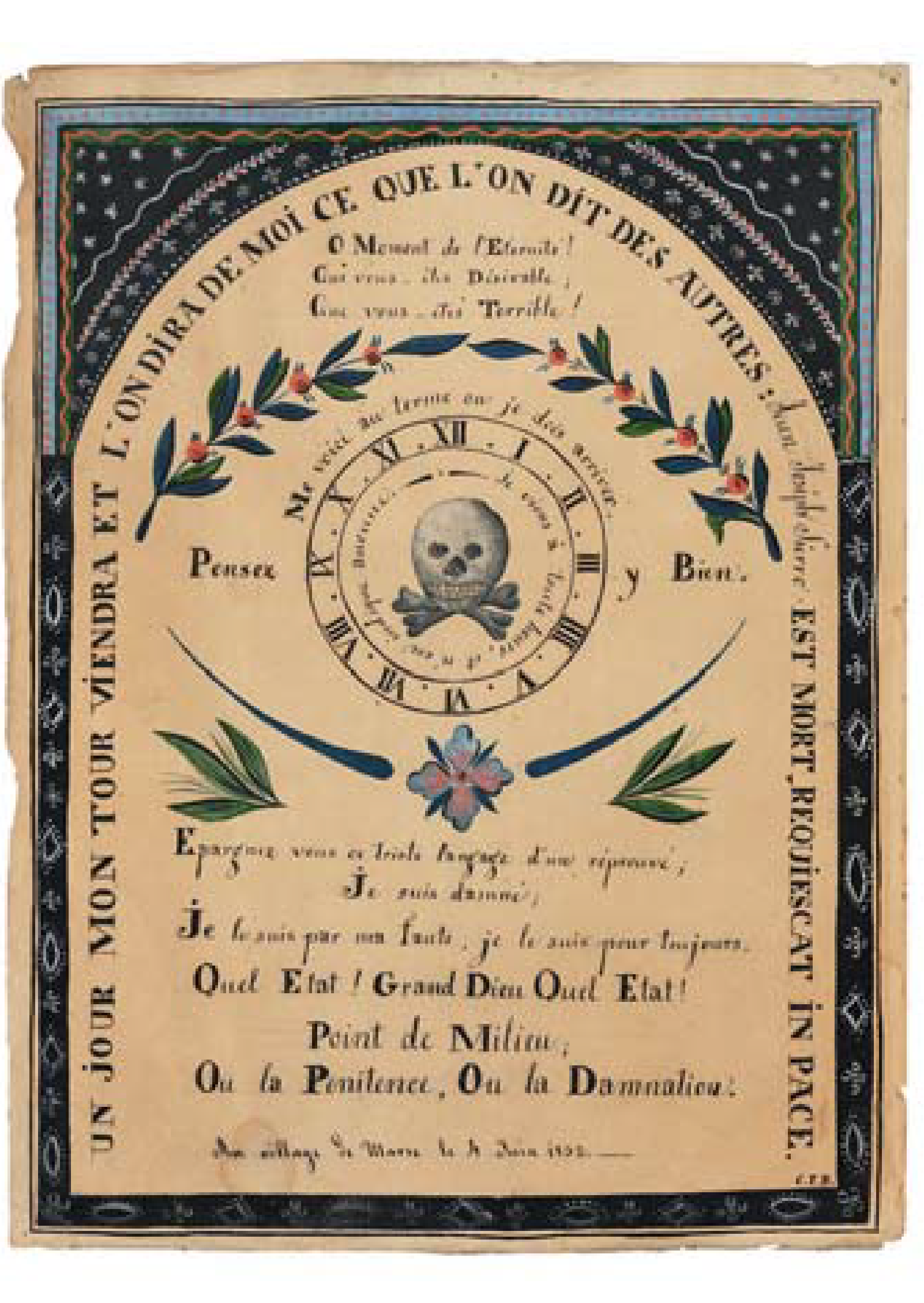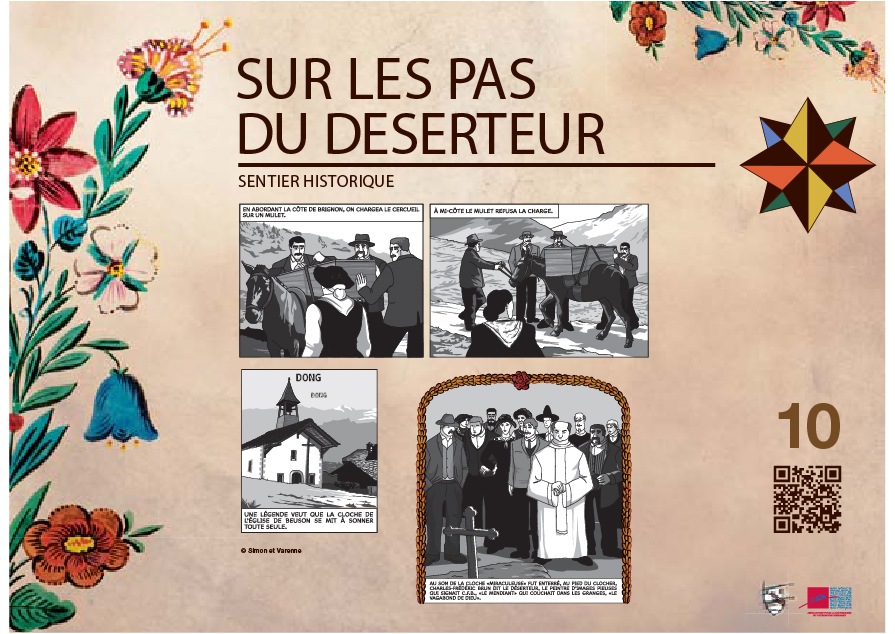“When you transport the coffin…like a pigeon’s feather. Blessed are the poor, for they shall meet God. That was the least of it for him.” February 1966
JEAN GIONO
Le Déserteur © Gallimard
![]() On 9th March 1871, Charles-Frédéric Brun – known as the Deserter – passed away. He was buried at the Basse-Nendaz cemetery on 11th March. For the 100th anniversary of his death in 1971, these words were engraved on a tower pillar on the door of a granary at Brignon that was recovered from a fire: ‘Charles Frédéric BRUN Known as ‘The Deserter’ Native of Colmar, found refuge at Le Valais Died in the parish of Nendaz on 9 March 1871 We loved him and adopted him His sacred images Brightened up Our chapels and our homes’ As part of church renovation operations in 2003, his alias was fixed onto a commemorative plaque between the church tower and the cemetery at the place where the original tomb is thought to be. Until the 1950s, some parishioners made little sachets of the earth that covered the Deserter’s tomb – it was said that the earth healed the ills of people and beasts.
On 9th March 1871, Charles-Frédéric Brun – known as the Deserter – passed away. He was buried at the Basse-Nendaz cemetery on 11th March. For the 100th anniversary of his death in 1971, these words were engraved on a tower pillar on the door of a granary at Brignon that was recovered from a fire: ‘Charles Frédéric BRUN Known as ‘The Deserter’ Native of Colmar, found refuge at Le Valais Died in the parish of Nendaz on 9 March 1871 We loved him and adopted him His sacred images Brightened up Our chapels and our homes’ As part of church renovation operations in 2003, his alias was fixed onto a commemorative plaque between the church tower and the cemetery at the place where the original tomb is thought to be. Until the 1950s, some parishioners made little sachets of the earth that covered the Deserter’s tomb – it was said that the earth healed the ills of people and beasts.
![]() Memento Mori. Remember that you too are going to die!
Memento Mori. Remember that you too are going to die!
PATOIS
“Nourishing the dandelions via the roots” is an expression that means to rest in a cemetery. A Nendaz, speakers of patois prefer to say« Vouârda é dzenële d’incourâ », littéralement which literally translates as “look after the curate’s chickens”. Another patois term, i tèra di coeutâe, the soil of the iris flowers, harks back to the soil that covers the bodies that do not decay, that being the case in particular for the tomb of the Deserter.
![]() The Deserter unconsciously evokes the song of Boris Vian: “Mr President, I am writing you a letter That you may read If you have the time. I have just received My military papers To go to war Before Wednesday evening…” But if our Deserter was not fleeing the army, what was he fleeing?
The Deserter unconsciously evokes the song of Boris Vian: “Mr President, I am writing you a letter That you may read If you have the time. I have just received My military papers To go to war Before Wednesday evening…” But if our Deserter was not fleeing the army, what was he fleeing?

ONE DAY IT WILL BE MY TURN, AND PEOPLE
WILL SAY OF ME WHAT IS SAID TO OTHERS:
Jean Joseph Sierro HAS DIED, REQUIESCAT IN PACE.
O Moment of Eternity!
How longed-for you are!
How Terrible you are!
Here I am at the end where I must arrive.
I come at any time, and give no sign of my coming.
Think on that.
Spare yourself the miserable language of the outcast;
I am damned;
It is my fault that I am so; I have always been so.
What a State to be in! Good Lord, what a State!
At the point in the Middle;
Either penitence, Or Damnation.
At the village of Marse on 4 June 1852. C.F.B.
27 x 20,5 cm. © Robert Hofer, Sion

When you want to be alone, where do you hide yourself?


